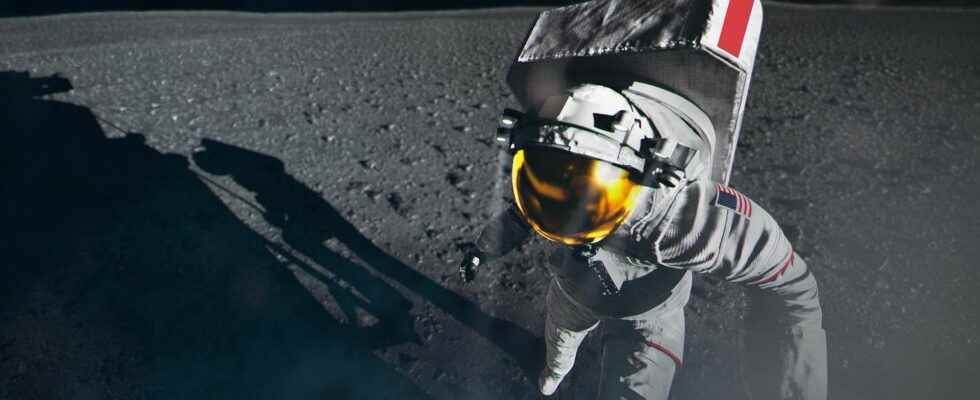This third mission of the Artemis program is the one that will see Americans return to the Moon. The Nasa foresees it in 2025 but it is unlikely that this date will be kept. 2028 seems to be a much more realistic date. Among the mission plans considered, NASA has chosen a mission in orbit NRHO around the Moon (Near-Rectilinear Halo Orbit) in order to deploy and commission the first habitation module of the GatewayI’lunar outpost which will be built near the Moon.
If four astronauts will fly away from Earth to reach the moon, only two will land on the surface. They will join her aboard the Starship lunar of SpaceX. NASA has indicated that this American crew will be composed of a woman and a person from color.
Unlike missions Apollo whose capsules remained in orbit around the Earth, with Artemis 3 the vehicle Orion will dock at the lunar gateway. It is from this lunar base that astronauts will prepare to descend to the Moon and return.
The duration The total duration of the Artemis III mission is 25 to 34 days and the stay on the Moon a maximum of 6.5 days. In December 2020, NASA declared that, for this mission, no motorized vehicle was planned. The astronauts will move on foot! But, by then it is not excluded that NASA changes its mind. This crew should be selected in 2022, or even later if The NASA is forced to postpone the launch date of Artemis 3. It will be trained to perform tasks that the astronauts of the Apollo missions could not do. In particular, they will be trained to recover lunar samples of great interest and in geographically diverse locations.
During this surface mission, NASA set seven scientific objectives and the return to Earth of 85 kilograms samples taken from the surface of the Moon but also from its subsoil. As a reminder, a total of 382 kilograms of lunar stones and rocks had been brought back by the Apollo missions between 1969 and 1972.
Science Objectives of Artemis 3
- understand planetary processes, since the moon can serve as an analogue for other worlds “without air » such as asteroids ;
- characterize and understand the origin of lunar polar volatiles, including water ice known to exist at the south pole of the moon where astronauts are expected to land;
- interpret the impact history of the Earth-Moon system, because the Moon has a surface which, unlike that of the Earth, retains its craters for long periods of time;
- reveal traces of the past Sun and our astronomical environment, since traces of solar activity can become embedded in the lunar surface;
- observe the universe and the local space environment from a single location, which could be useful for astronomical research from the far side of the Moon;
- conduct scientific experiments in the lunar environment, the details of which will be clarified when NASA determines which experiments will be brought to the Moon;
- studying and mitigating the risks of exploration, which NASA hopes to do on a human mission to Mars in the 2030s.
You will also be interested
Interested in what you just read?
